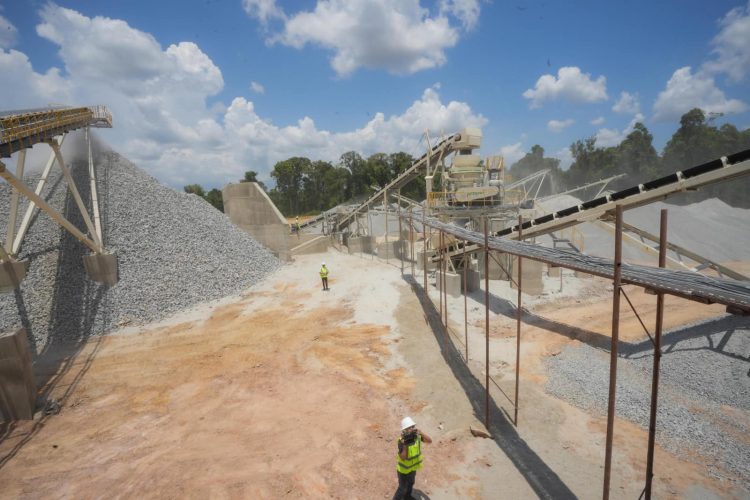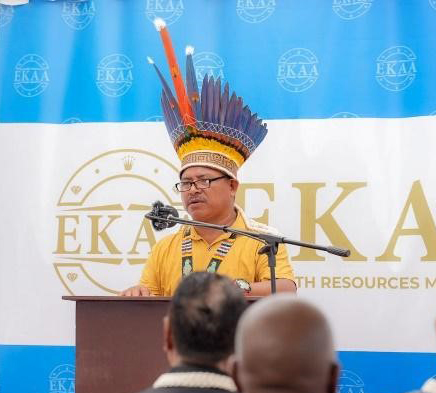EKAA HRIM Earth Resources, a new mining company which opened a US$20 million quarry in Batavia, Region Seven, has committed to making quarterly lease payments on three different sections of the 1,080 acres of land in the village, along with several other benefits.
Batavia’s Toshao Oren Williams told Stabroek News that the deal to have EKAA HRIM Earth Resources mining on the Amerindian land was signed with the guidance of the Amerindian Act. This is a 15-year deal, with the possibility of an extension, Williams said. How-ever, for now, the company is expected to pay on the lease for three different zones that come at three different prices for the next 15 years.
“The payment is actually coming through the lease per acre; different prices for the buffer zone, and places that they will not be. It’s just the boundaries and the place where they are blasting it’s a different price. On the production site, another payment will also come out. So, they will be three separate payments,” he explained.
He said they have been advised by the Ministry of Amerindian Affairs not to reveal details concerning the sums to be paid to the public. What he could say, however, was that payments will be made on a quarterly basis and after the first five years will increase by 5%; in ten years it will go to 8% and a 10% increase in the last five years.
Apart from those agreements, it was also noted that the company has agreed that it will not disturb the forest in the non-blasting quarry area. It is permitted to stop any villagers from taking logs from the leased area. I00t was also agreed that hunters would be permitted to hunt and warning signs and alarms must be in place when the rock is being blasted. The company will also support the health centre and the school and has agreed to supply water and electricity to the village, as the plant plans to go solar.

Under the deal with the community, EKAA HRIM Earth Resources of India has acquired some 1,080 acres of land, with 13 acres being used for mining while the remaining will be a buffer zone. The company is expected to produce some 100,000 tons of stone monthly and its production will ease the bottleneck in the supply of stone needed for the construction industry.
Batavia is a village of some 600 people and since the company has come into the village, only 15 residents have been employed temporarily.
Williams said that while the investment is good there must be more with the inclusion of permanent working positions for the villagers.
Asked if he believed that the company would fulfil its obligations to the community, Williams said: “Yes. So far from the beginning now… not everything because there are certain things we want to straighten with them. One of the things we are not too pleased about so far is that the staff they employed from the village were not paid on time. That was the only thing actually we were not pleased with… they get the money but not on time. Some of the complaints also are that they worked overtime and didn’t get paid for overtime. We met with the managing committee of the quarry and they told us that because they are at the initial stage, we are going to find those kinds of hiccups but as the quarry is operating those things will be strengthened out and everything will be in order.”
Williams added that he also had to explain the process and how it works since his villagers were never employed in a structured setting since most of them are miners.
He is hoping that the company will train younger villagers so that they can become qualified to work.
“We don’t have the qualifications and skills in the village here for some of the vacancies they have. So, I can give and take with that. That is why we are actually asking the company to train the young ones now since we don’t have the skills,” he emphasised.
He opined that this would see villagers earning equal salaries with the other workers while learning how the system works.
The company says it has made a commitment to execute the toshao’s proposal .










